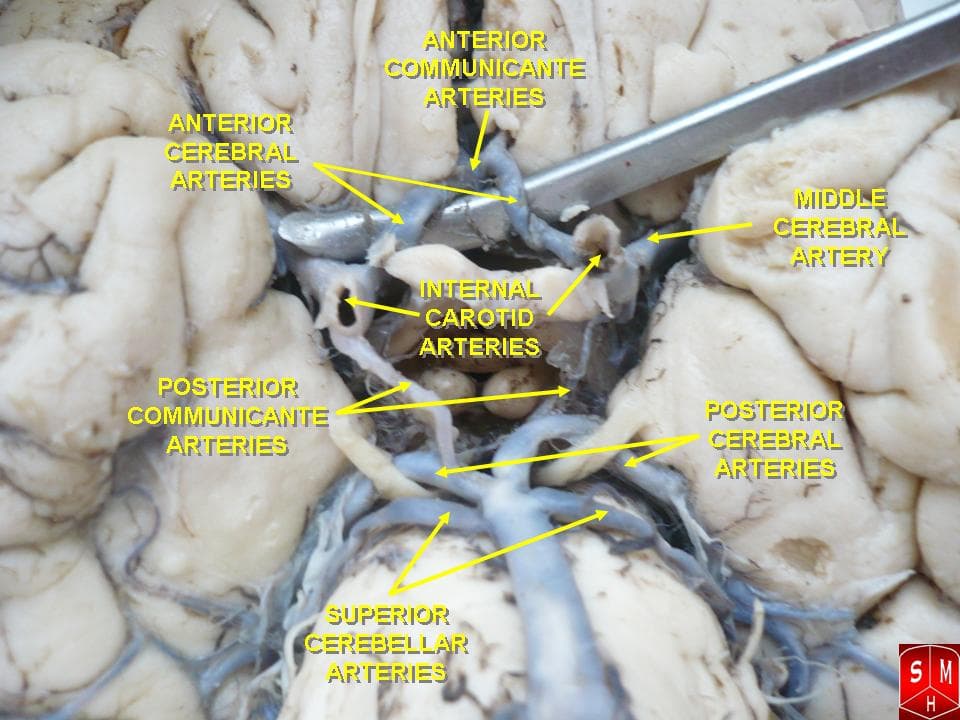Very well spoken, @vdm. Thank you.
@BlacknBlueSaint - Thank you for sharing the heart of this forum so compassionately & concisely in your post.
@elijah - Thank you for acknowledging the potential language barrier. Since our forum is available worldwide, it’s inevitable that we may not always fully understand each other, however, we do our best to try.
Well, I completely agree that in many typical, “healthy less one hypoplastic vertebral artery” cases the patient has no severe symptoms. The complexity and possible effect might start emerging later in life, when intervertebral discs start losing their flexibility and height, when ligaments become less stable or opposite - stiffer (depending on individual body’s abilities to produce healthy collagen), when osteophytes start growing putting limits on how freely the vertebral arteries can move/slide inside the “canal”, how well developed CoW is so that no aneurysms develop, etc.
What I am trying to say, our bodies are not “created by design” but evolved, and the vast majority of medical knowledge is gathered by observing the subjects rather than reading the design blueprints and stating “this is how it must work, everything else is wrong”. Most common varieties are called “anatomical variations” which are well documented and classified (including CoW anatomical variations, IJV, VA anatomical variations etc.)
The issue is that there are more potential anatomical variations than we can imagine, and the body might have developed some very individual redundancies to cope with that. The problems start when some of those redundancy mechanisms start to fail, and some “anatomical variations” of those redundancy mechanisms are more prone to failure than others.
Basically, the numbers you mentioned are based on observations, but we don’t know if they are optimal numbers for every instance. What if someone has sickle cell disease? What if someone has anemia? What if someone used to live in high altitudes and their brains got used to semi-hypoxic state? What if someone is pregnant and more blood needs to be passed to the fetus? What if someone had radical dissection due to the cancer and lost one of the ICAs?
There are more “what-if’s” than we can imagine, and that’s why there are so many so called “rare diseases”, and even more to be discovered, I hope, as we still have too many sick people who can’t figure out what exactly is going on despite enormous amount of examinations.
I like how you think, @vdm, but I do have a question. What is CoW?
Circle of Willis.
CoW aneurysms due to developmental issues, from what I remember, are often fatal, as it’s very hard to successfully operate on them.
Btw there’s a fresh article on correlation between CoW anatomical variations and certain intracranial aneurysms:
https://www.sciencedirect.com/science/article/pii/S0022510X23002010
Thank you for clarifying. I probably could have figured it out if I’d referred back to earlier posts. ![]() Just call me lazy.
Just call me lazy.
It’s interesting though as one radiologist about ten years ago confidently stated that on MRI he saw hypoplastic posterior communication arteries in my CoW.
Later scans, esp. CTA, always came as “normal appearance CoW”. I don’t have those old MRI images, also MRI/MRA (without contrast) isn’t the same resolution/clarity as modern CTA can be, so I am not sure if my CoW just evolved, or the first radiologist was wrong, or the old MRI scan didn’t catch it right, or later radiologists somehow differently interpreted the same reality. Maybe criteria changed and what used to be seen in my case as “hypoplastic” in the past, now doesn’t match the criteria anymore.
@vdm, Whatever the case, I’m glad it’s normal now.
I need dicom iso, the web viewer has limited options. Send a google drive link to dicom iso. When you did the CT scan, lying on your back, was your neck tense and your chin higher?The degree of compression may also depend on the position of the head/chin; the lower the chin, the greater the compression. And yes, pain in the neck is possible due to the hyoid bone.
Awesome images, @vdm. Thank you for the visual of the CoW!!
something similar to this as an example. This photo is taken from a medical article (Styloidogenic Jugular Venous Compression Syndrome: Clinical Features and Case Series\ Authors et al. Xiaochun Zhao, MD Peter Nakaji, MD)
@PatientX see above on www.dicomlibrary.com






